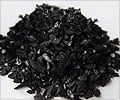A theory on how several plants transport sugars from their leaves to flowers, roots, fruits, and other parts of their structure has been proved by researchers at Cornell University.
Robert Turgeon, Cornell professor of plant biology who first proposed the theory of transporting sugar in 1991, said that his team used genetic engineering techniques to prove his theory, known as the polymer trap model.The researchers say that their findings may help deepen the understanding of basic plant biology. They also say that these findings may be critically important in an era of climate change because they may one day allow researchers to genetically engineer plants with increased photosynthetic rates, yields and carbon dioxide intake.
According to Turgeon's theory, upon accumulation in leaves as a product of photosynthesis, sucrose diffuses into the plant's tube like transport tissue called phloem along with other nutrients to move to other areas of the plant.
In the phloem, small molecules of sucrose combine to form larger and more complex sugars, which become too large to flow back into the leaf. The sugars thus produced are then forced to move away from the leaf to parts of the plant where they may be used or stored.
Turgeon worked with Dr. Ashlee McCaskill to prove this theory. They genetically engineered a plant closely related to a member of the figwort family, purple mullein (Verbascum phoeneceum L.) to silence two genes involved in combining sucrose into larger molecules.
When the researchers did so, sugars backed up in the leaves.
Advertisement
Similarly, when the sugars move out of the leaves, the rate of photosynthesis and carbon intake increases, the researcher added.
Advertisement
A 2006 article in the journal Science showed that when atmospheric carbon dioxide increases, plants do not take in the excess due to a series of feedback loops that constrain the plant, said McCaskill.
"Phloem loading is one of these feedbacks that have an effect on the ability of plants to intake carbon dioxide at the highest level," said the researcher said.
McCaskill noted that carbon dioxide, which is increasing in the Earth's atmosphere, is the major greenhouse gas that traps heat and warms the planet.
The study has been reported in the Proceedings of the National Academy of Sciences.
Source-ANI
LIN/M






